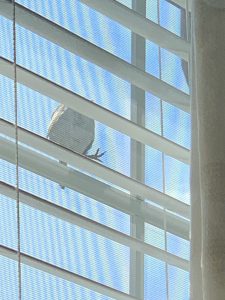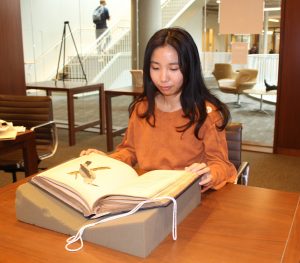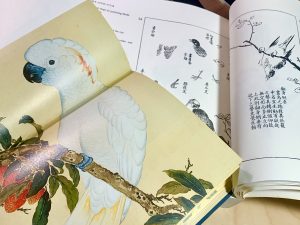Enjoy this post by Yuqi (Claudia) Zhang, one of our Special Collections Freshman Fellows for the 2019-2020 academic year!
Hi guys! Hope you have stayed safe and healthy. Have any of you once being so bored like me, staying at home, daydreaming, and staring at the backyard, and suddenly observed some visitors—some adorable little birds—like a cardinal or a sparrow that occupied nature in the absence of humans? Maybe you can also read some bird illustrations to appreciate these little creatures!
The second part of my Freshman Fellows project started with an unexpected discovery. When I was back to China in the late December, I searched through books in my local bookstore for anything related to bird illustrations. I found a newly published copy of a Qing dynasty’s painting collection, called ???? Niaopu (after Jiang Tingxi). It shifted my research to an unexpected direction.
Niaopu can be translated as “Bird Book.” But “??pu?” means more than a “book.” It generally refers to a book, note or chart with compiled items, usually carrying an implication of categorizing information. The original copy of this Niaopu is a facsimile of another earlier Niaopu by the court artist Jiang Tingxi, unfortunately lost. This remaining later copy is a collection of 360 birds, delicately painted in a fine-brush technique and on the verso written the name, features, habits, and even some literary references of each bird (like it may quote a famous poem that includes the birds in its line). Discovering Niaopu overturned my previous understanding of the presence of birds in the East Asian art. As I formerly researched, the “bird book” that presents the images and information of different species of birds has it common and popular presence in the Western art. This form of book is usually driven by some degree of scientific interest and for the pleasure of art collection. Audubon’s Birds of America is one example. I did not find any similar presence of birds’ images and information compiled into books in the East Asian art. I only saw birds as subjects in Huaniao hua, or in Japanese Kachoga (“flower-bird paintings”), in travel journals, and even as ingredients in medical manuscripts. I therefore had considered birds primarily as the auspicious motif in East Asian art pieces. My finding of Niaopu changed everything. Niaopu tells me this kind of bird books did exist, and I perceived more parallels between bird illustrations in the West and the East. 
The discovery directed my final project into an exhibition of this a series of parallels. I divided it into four: bird books (like Niaopu), travel journals, how to draw birds (art textbooks), and modern approach (a photography textbook of shooting birds). Among all the materials I selected several books from America, Britain, China, and Japan. I planned to hold an exhibition in the library with Amy but unfortunately had to change my plan in response to the pandemic.
It has been a challenge to complete the project at home, especially with all the books left in Brody. But thanks to Amy for helping me to find scanned copies of my materials online and figuring out a way to create an online exhibition, and also thanks to Mark Cyzyk for assisting me with the technological part, I put everything online. I still hope I can hold an onsite exhibition if we are able to back to campus in the fall semester. Hope I will see you guys in the library!
Encounter Claudia’s online exhibit here.


